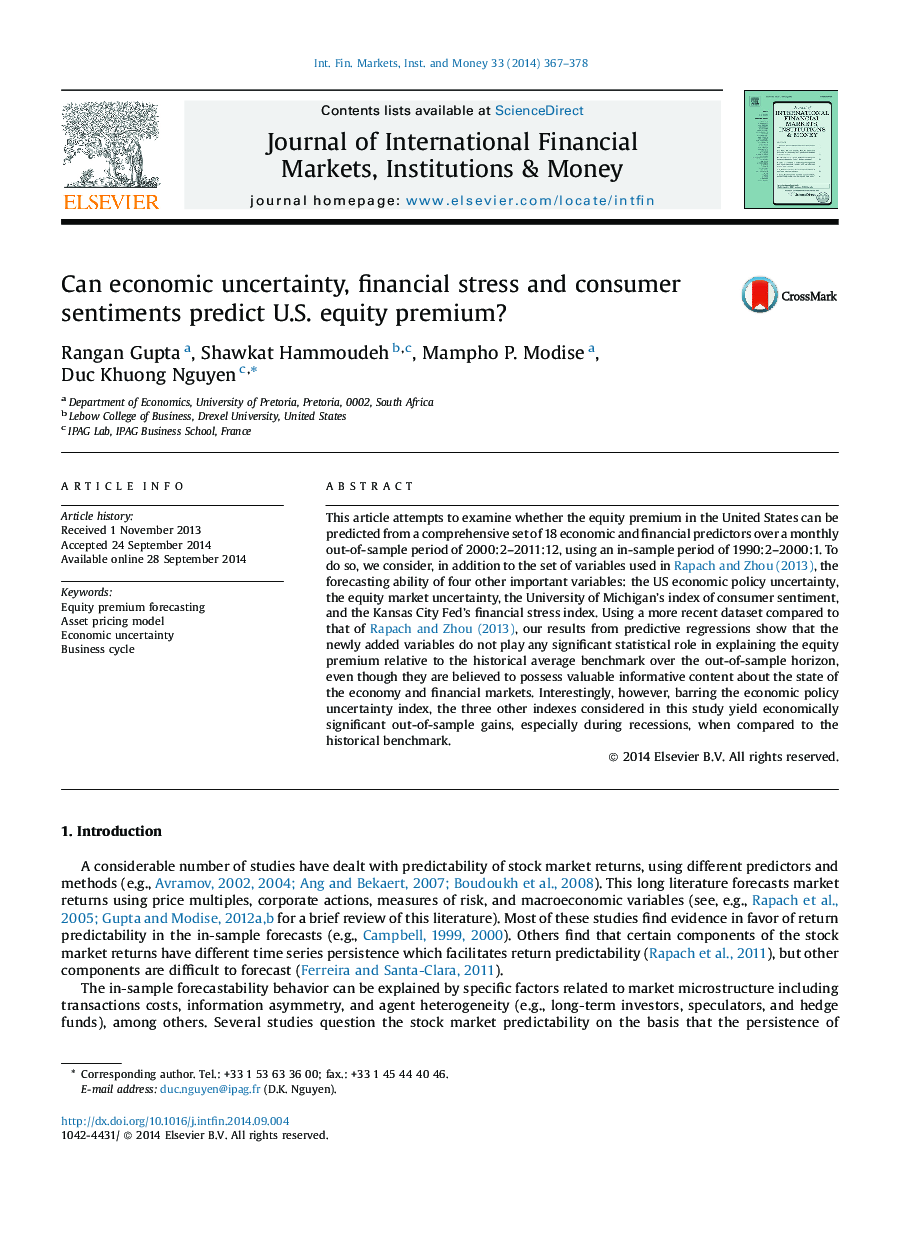| Article ID | Journal | Published Year | Pages | File Type |
|---|---|---|---|---|
| 963879 | Journal of International Financial Markets, Institutions and Money | 2014 | 12 Pages |
•We forecast the U.S. equity premium forecasting using a comprehensive set of predictors.•Financial stress, consumer sentiment, and policy and market uncertainty are also considered.•Newly added predictors play no significant role in forecasting the equity premium.•The results point however to significant economic gains, especially during recessions.
This article attempts to examine whether the equity premium in the United States can be predicted from a comprehensive set of 18 economic and financial predictors over a monthly out-of-sample period of 2000:2–2011:12, using an in-sample period of 1990:2–2000:1. To do so, we consider, in addition to the set of variables used in Rapach and Zhou (2013), the forecasting ability of four other important variables: the US economic policy uncertainty, the equity market uncertainty, the University of Michigan’s index of consumer sentiment, and the Kansas City Fed’s financial stress index. Using a more recent dataset compared to that of Rapach and Zhou (2013), our results from predictive regressions show that the newly added variables do not play any significant statistical role in explaining the equity premium relative to the historical average benchmark over the out-of-sample horizon, even though they are believed to possess valuable informative content about the state of the economy and financial markets. Interestingly, however, barring the economic policy uncertainty index, the three other indexes considered in this study yield economically significant out-of-sample gains, especially during recessions, when compared to the historical benchmark.
